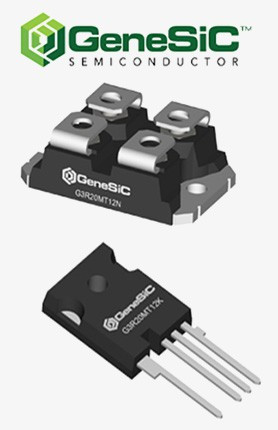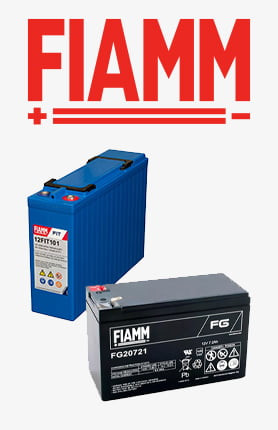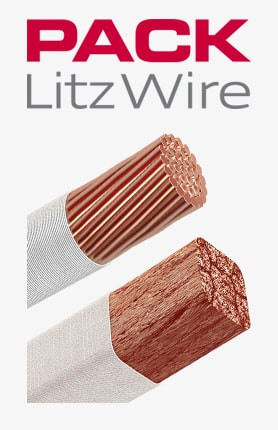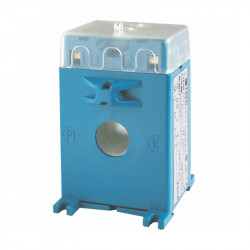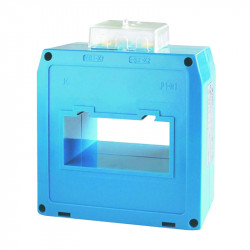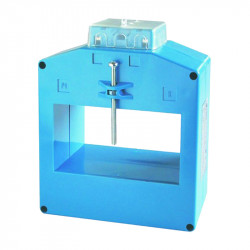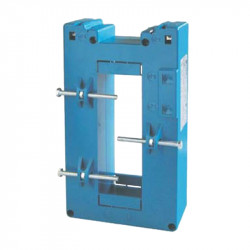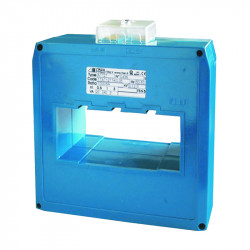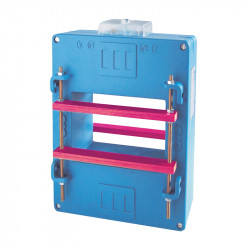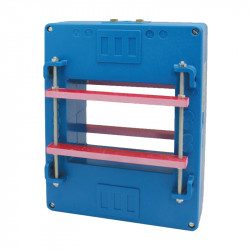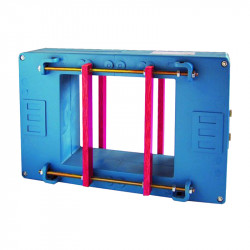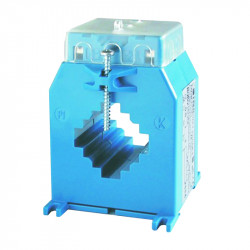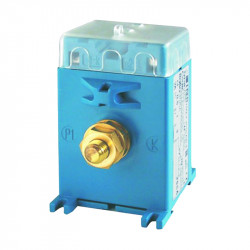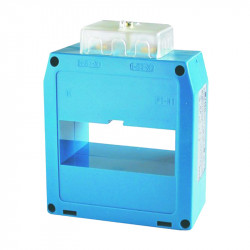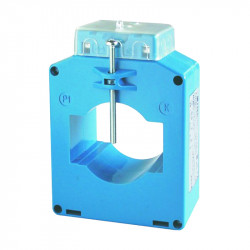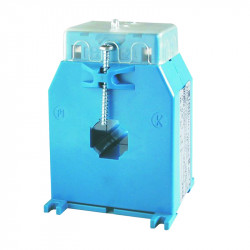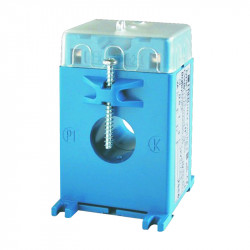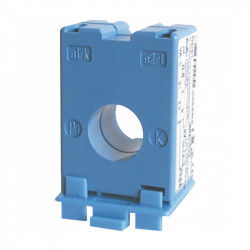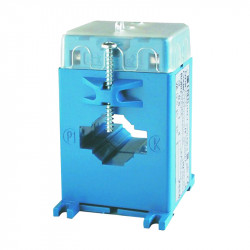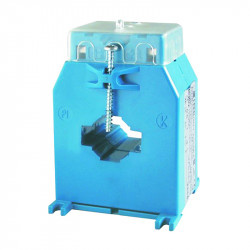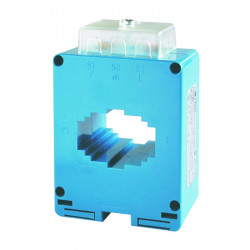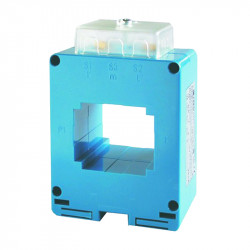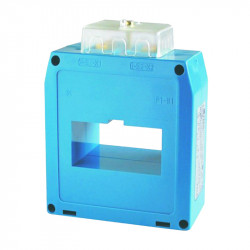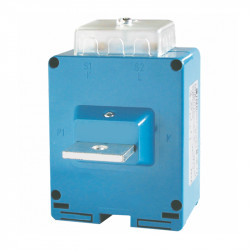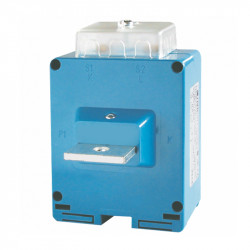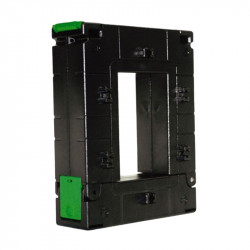Current Transformers
Categories
We offer a wide range of current transformers for various applications, including devices such as: current transformers with a hole for a busbar and cable, current transformers with voltage measurement, and compact current transformers for circuit breakers. Our customers have known for many years that they can rely on the quality of the products we offer.
What is a low voltage current transformer?
A low voltage current transformer (CT) is a special transformer whose task is to convert high-value currents into appropriately lower currents. The transformers are designed in such a way as to provide galvanic isolation between the primary and secondary circuits. This protects the connected measuring instruments in the event of a disturbance.
The most important parameters of a current transformer are
- Rated ratio – the ratio of the rated primary current to the rated secondary current, usually given as an unreduced fraction.
- Rated current In – the effective value of the primary and secondary currents. The standardized values of primary currents are 5; 10; 15; 20; 25; 30; 40; 50; 60; 75; 100 A and their multiples up to 7,500 A. The standardized values of secondary currents are: 5 A and 1 A.
- Maximum operating voltage Um – defined as the highest and permanently allowable value of the line-to-line voltage that will not damage the transformer.
- Rated insulation voltage Un – the standardized value of the line-to-line voltage for which the insulation between the primary and secondary windings or grounded metal parts of the transformer is designed.
- Accuracy class – a standardized number indicating the allowable device error. Classes are marked by the maximum permissible percentage measurement error at the rated primary current assigned to that accuracy class. Accuracy classes include e.g.: 0.1; 0.2; 0.5; 1; 3.5.
- Rated short-time thermal current Ith 1-second – this is the effective value of the primary current that the transformer should withstand, with the secondary windings short-circuited, without damage.
- Rated dynamic current Idyn – the peak value of the primary current that the transformer withstands with the secondary winding short-circuited.
- Rated continuous thermal current Icth – the primary current at which the loaded transformer can be used without exceeding a specified temperature value.
Uses of current transformers
Current transformers are used to extend the measuring range of ammeters, which results in cost reduction. Additionally, the transformer can be used as a galvanic separator of measuring and protection circuits from the main current path, which enhances the safety of the measuring and protection installation.
How is a low voltage current transformer constructed?
Low voltage current transformers (CT) are built from four main components – the core, primary winding, secondary winding, and housing. The first is responsible for transferring and concentrating the magnetic flux generated by the primary current. The magnetic core is made from ferromagnetic materials. It can have a closed or open toroidal shape, which makes the low voltage CT easier to install in electrical circuits.
The primary winding is the element responsible for conducting current from the network circuit, thus it is electrically and mechanically connected to it. It is usually made of conductors with a large cross-section, capable of withstanding high energy values.
The secondary windings, which every low voltage current transformer is equipped with, are most often made from copper wires with high conductivity and good insulation. They are responsible for generating a current proportional to the primary current but of a reduced value.
The housing in which the low voltage current transformer is placed provides protection against adverse factors at the installation site. It is mostly made of plastics resistant to high temperatures and corrosion.
How does a low voltage current transformer work?
Low voltage current transformers are designed for measurement and protection of circuits with allowable voltages not exceeding 0.72 kV or 1.2 kV, and a frequency of 50–60 Hz. Therefore, they are also referred to as single-phase small power transformers.
The low voltage CT operates based on electromagnetic induction as well as Ampère's and Faraday's laws. The current flowing through its primary winding generates a variable magnetic field in the core, which minimizes energy losses and in turn induces voltage in the secondary winding. The proportions between currents in the transformer windings are proportional, defined by the current ratio. For example, if the ratio is 100:5, it means the secondary current is 1/20 of the primary current.
In what variants do low voltage current transformers come?
Low voltage current transformers can be divided into two basic types. The first are models with an openable core. Their construction is designed to allow easy winding onto existing cables. This type of core works well when low voltage CTs are used in modernized installations.
The second basic type of single-phase small power transformers are models intended for mounting on a busbar. This type of low voltage CT can easily be connected to distribution systems. Their simple mounting on current rails makes them most commonly used in electrical switchboards and automation installations.
How to select low voltage current transformers?
The selection of low voltage current transformers should be based on matching their basic parameters to the requirements present in the electrical system. First of all, it is essential to determine the primary current (Ipn), which is the highest value flowing through the primary circuit, and the secondary current (Isn), which depends on the type of connected measuring devices. The next step is to calculate the rated ratio, i.e., the ratio of the primary current to the secondary current.
The selection of low voltage current transformers should also consider their accuracy class, which defines the maximum measurement error. It must be adapted to the intended use of the single-phase small power transformers.
Besides the above aspects, when choosing a low voltage CT, one should also consider its:
- rated power Sn,
- short-circuit parameters Idyn and Ith,
- resistance to environmental conditions corresponding to the place of application.
Additionally, the chosen low voltage current transformer should be manufactured in accordance with the IEC 44-1 (EN 60044) standard. It defines the requirements related to their construction, measurement methods, and testing procedures. Thanks to this, one can be assured of its proper operation in power systems.

